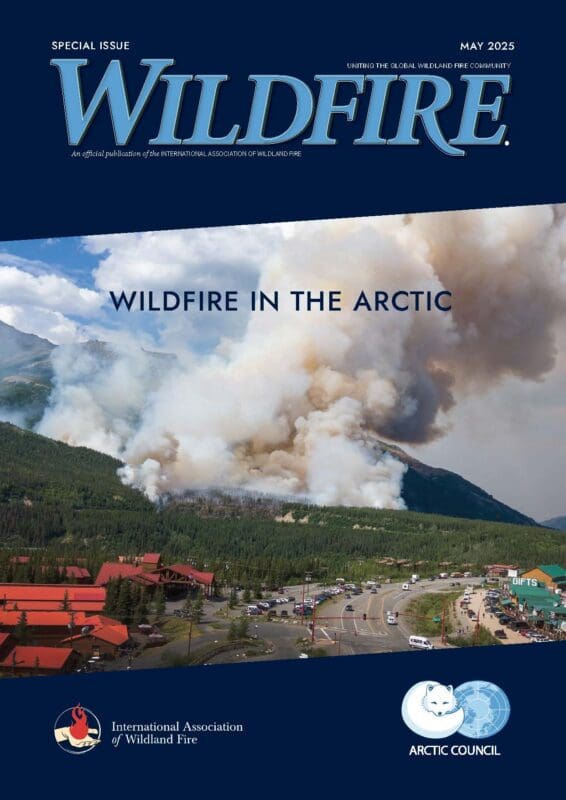Context & Purpose
- Remote Alaska communities face growing wildfire and structural fire risks, exacerbated by climate change, permafrost loss, longer fire seasons, more lightning, changing precipitation, and warmer temperatures. Many of these communities are extremely isolated: accessible only by small aircraft or barge, with limited evacuation routes, sparse infrastructure, and often minimal or no registered fire departments.
- There is a disparity in fire response and suppression capacity: most rural and tribal villages lack basic firefighting infrastructure, reliable communications, or trained personnel. Standard evacuation or response strategies that assume road access and mutual aid are often infeasible. Smoke, fire, and structural fire risks threaten not just property but community health, subsistence lifestyles, and food security.
- The Alaska Wildfire Resilience Initiative, launched a pilot program called FIRE GAP (“Fire Incident Response, Education, Guardianship, and Preparedness”) in communities like Igiugig in 2024–2025. The goal is to co-create emergency management / fire preparedness plans, provide training, build capacity, and tailor prevention and mitigation to each community’s circumstances.
Key Findings
From the pilot in Igiugig and the assessment of more broadly remote Alaska communities:
1. Critical gaps in infrastructure and capacity
- About 60% of Alaska’s 285 communities do not have a state-registered fire department.
- Nearly all of the 235 rural communities lack basic firefighting infrastructure: fire stations, equipment, reliable communications systems. Sometimes water access for firefighting is limited.
- Because of this, community response is often delayed or relies on external resources, which are costly or slow, if reachable at all.
2. High fire risk, rising dramatically
- In regions like Bristol Bay, there has been a ~7,500 % increase in acres burned in the past 20 years (vs earlier baselines).
- Structural risk (housing, buildings), wildland risk (forest and tundra), smoke and public health risk, and risk to subsistence landscapes are all increasing.
3. Training, education, and community ownership matter
- In Igiugig, AVF’s FIRE GAP pilot included in-person trainings, remote technical support, home assessments, installing smoke alarms, and public education.
- Activities tailored for different age groups, roles, and interests: children with stories in Yup’ik / Central Yup’ik, adults learning about clearing fuel, managing electrical fire risk, etc.
- The community respondents say they are already applying what they learned: clearing wild sedge around houses, replacing smoke alarms, acquiring extra hose, reviewing home layouts, etc.
4. Cultural relevance and inclusion are essential
- Trainings and materials that respect local culture, language, values, and knowledge lead to better engagement and ownership.
- Tailoring is required: no “one size fits all” because different communities differ in terrain, risk, fire-ecology, legal context, access, and values.
5. Challenges remain, especially for scale and resources
- Funding, staffing, equipment, and ongoing technical support are limited. Scaling up to many communities will require considerable investment.
- Sustaining momentum, ensuring plans are kept updated, ensuring that training leads to durable capacity (not just one-off events) is a concern.
Conclusion
- The FIRE GAP pilot demonstrates that remote Alaska communities can increase their preparedness and prevention capacity when locally co-designed programs embed training, education, cultural inclusion, and appropriate resources.
- Because evacuation and standard suppression are often not viable, local resilience—both in terms of physical readiness (equipment, infrastructure) and community capacity (trained people, awareness, communication, prevention behaviors)—is essential.
- Cultural knowledge and community leadership are not merely “nice to have,” but core to effective fire prevention and planning. Programs that ignore local values, languages, or knowledge are likely to fail or be under-utilized.
- Scaling up this kind of work—bringing FIRE GAP or similar approaches to more villages—will require attention to funding, sustainable program design, strategies for maintaining and renewing skills/equipment, and ensuring that external agencies (state, federal) support rather than supplant local efforts.
- Ultimately, Preparation and Prevention that is community-based offers a promising path for reducing loss of life, property, health, and subsistence livelihoods in Alaska’s increasing wildfire context. AVF’s experience suggests that remote communities want and can use this kind of support, making it a vital part of broader wildfire resilience strategies.
